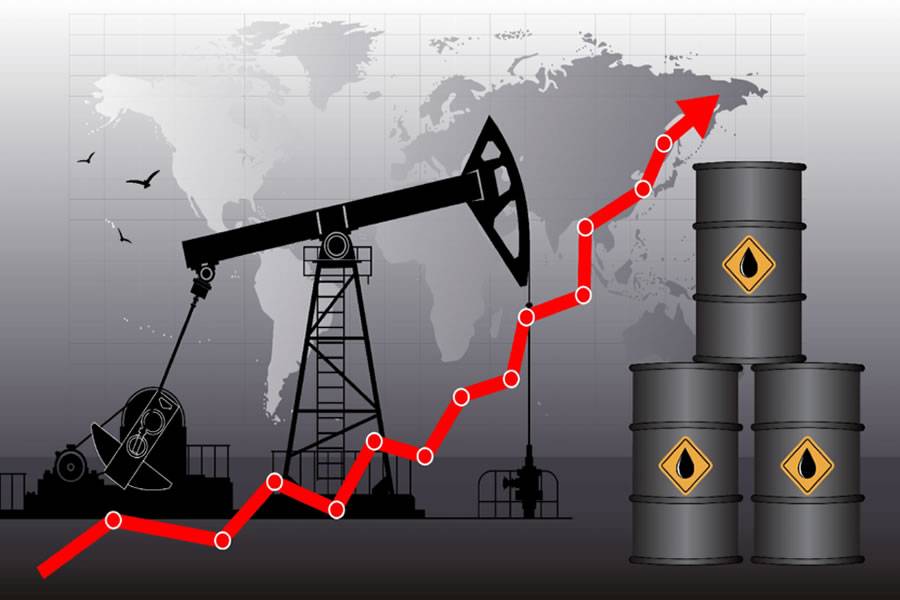Drilling down on Oil Trading: Essential tips and techniques
- 21-09-2023
- Business
- Canarian Weekly
Oil, often referred to as "liquid gold," serves as a cornerstone in powering worldwide economies, propelling industries, and facilitating daily routines. Delving into the nuances of oil trading necessitates an understanding of its rich legacy, multifaceted intricacies, and the vast expanse of the commodities sector.
Contemporary technological breakthroughs, combined with pivotal global events, have brought fresh vigour and unpredictability to the oil trading landscape. So, if you are looking for a reliable trading platform, you may consider the oilprofit.app.
UNDERSTANDING THE BASICS: CRUDE v REFINED OIL
Definitions and Distinctions:
· Crude Oil: Naturally occurring, unrefined petroleum. It's extracted directly from the earth and acts as the raw material for various products.
· Refined Oil: Post-processing, crude oil is transformed into usable products such as gasoline, diesel, and many petrochemicals.
Major Types of Crude Oil:
· West Texas Intermediate (WTI): A U.S. benchmark for oil, characterized by its low sulfur content.
· Brent Blend: Drawn from the North Sea, it's the international oil benchmark.
Understanding these differences is essential because each oil type has distinct qualities affecting market value, refining capabilities, and demand.
THE GLOBAL OIL LANDSCAPE: KEY PLAYERS AND MARKETS
· OPEC's Role: The Organization of the Petroleum Exporting Countries, consisting of 13 nations, is influential in determining global oil prices by setting production levels.
· Major Oil Producers and Consumers: The U.S., Russia, and Saudi Arabia are the top producers. China, the U.S., and India are the leading consumers. The balance of production and consumption in these nations influences global prices significantly.
· Geopolitical Influence: Events like wars, diplomatic tensions, or sanctions can create market volatility. For instance, sanctions on Iran can squeeze oil supplies, pushing prices up.
FUNDAMENTALS OF OIL PRICE MOVEMENTS
· Supply and Demand Dynamics: If OPEC cuts production, the decreased supply can drive prices up. Conversely, a global economic downturn might reduce demand, lowering prices.
· Global Economic Indicators: Strong economic growth usually drives energy consumption up, pushing oil prices higher. Recessionary trends do the opposite.
· Seasonal and Natural Factors: Winter in the Northern Hemisphere might increase demand for heating oil. Conversely, hurricanes in the Gulf of Mexico can disrupt supply chains, causing price spikes.
TECHNICAL ANALYSIS IN OIL TRADING
Just as with stocks, understanding charts and patterns is key:
· Chart Patterns: Head-and-shoulders, double tops, and wedges can indicate future price movements.
· Volume and Open Interest: A spike in volume might signal a new trend. High open interest at a particular price point might indicate strong support or resistance.
RISK MANAGEMENT AND TRADING STRATEGIES
· Setting a Stop-Loss: Essential to prevent massive losses. If oil prices move against a trader's position, a stop-loss order can automatically sell the position, limiting the loss.
· Hedging Using Futures and Options: These derivatives allow traders to set prices for future oil sales or purchases, providing a safeguard against volatile price swings.
· Swing Trading vs. Long-term Investment: Swing traders might buy and sell within weeks or months, capitalizing on short-term price movements. Long-term investors, meanwhile, look at yearly or even decadal trends.
THE DIGITAL AGE: ALGORITHMIC AND HIGH-FREQUENCY OIL TRADING
· Rise of Automated Systems: Algorithms can execute trades within milliseconds, reacting to market changes faster than humans.
· Pros and Cons: Algorithms can increase market efficiency but might also amplify volatile swings.
· Competing in a High-frequency World: Individual traders should stay informed and perhaps focus on longer-term strategies, as competing on the speed with algorithms is nearly impossible.
ENVIRONMENTAL CONSIDERATIONS AND THE FUTURE OF OIL TRADING
· Transition to Renewables: As the world shifts to wind, solar, and other energy sources, oil demand may plateau or decrease.
· Climate Change Policies: Strict environmental regulations can reduce oil consumption, impacting its trading dynamics.
· Eco-conscious Trading: Traders need to be aware of global environmental trends and potential green energy breakthroughs that might disrupt traditional oil markets.
Conclusion: The Ever-Evolving World of Oil Trading
In the intricate realm of oil trading, success hinges on a profound comprehension, adaptability, and the capacity to innovate. As technology consistently reshapes the landscape and with the emergence of platforms, an esteemed oil trading platform, the sector grapples with the flux of global political shifts and a growing emphasis on environmental sustainability.
However, individuals armed with adept knowledge and the appropriate resources stand a strong chance of thriving in this dynamic environment.
Other articles that may interest you...
Trending
Most Read Articles
2.
Featured Videos
A Vision of Elvis Tenerife Promo
- 10-05-2025
TEAs 2025 Highlights
- 17-11-2025



























































